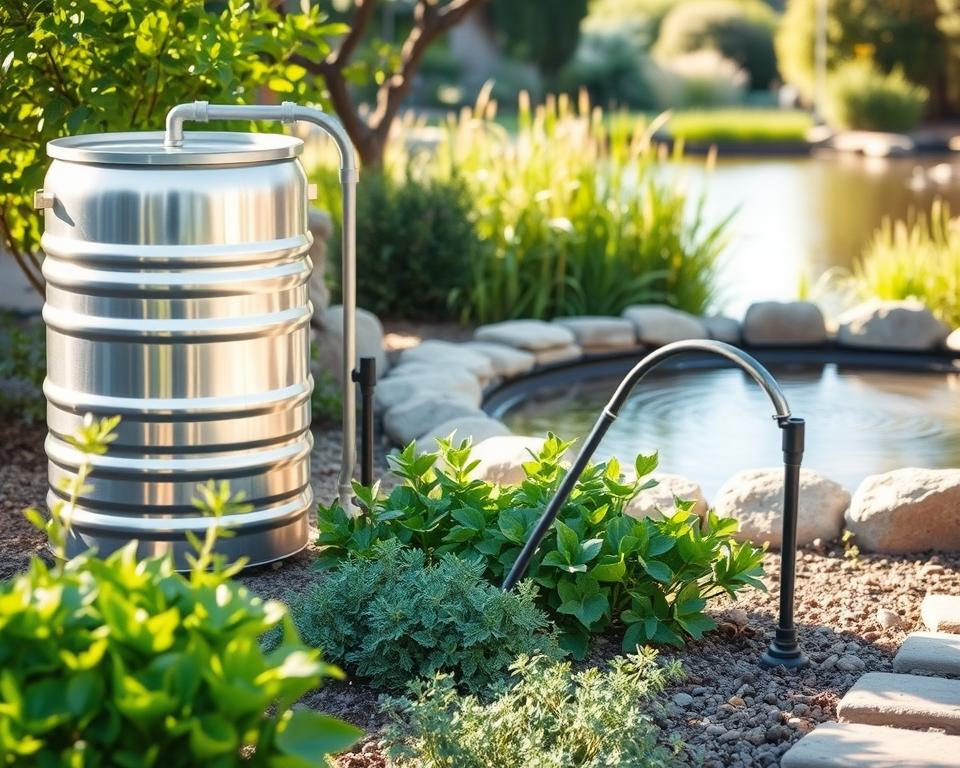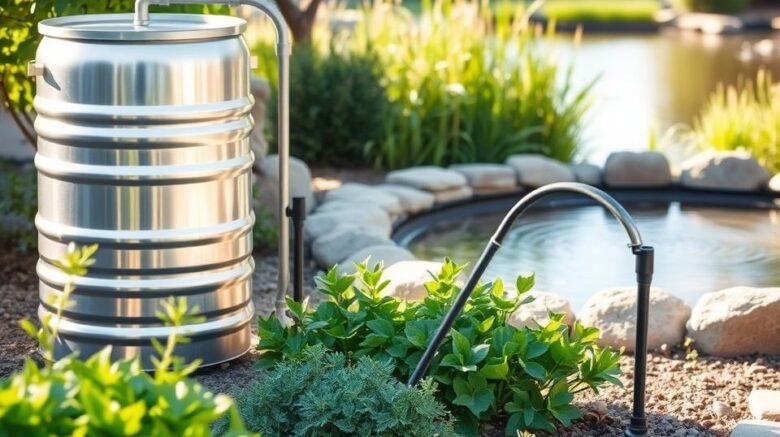Aerobic System Air Pump: Complete Guide for Property Owners
Ever pondered on what powers your oxygen-based Septic system’s performance? The Septic air pump is the unrecognized hero integral for your system. In this article, homeowners will acquire essential know-how on the Septic air pump’s purpose. It’s critical for a well-functioning, efficient Septic system.
Knowing the necessity of a Septic tank air Pump can boost your Septic system’s capabilities using septic tank inspection cost. It also preserves your home equity and local environment. Our handbook will present All in Sanitation, a reputable Septic industry expert. They’re ready to fulfil your Septic aerator Pump requests.
Key Observations
- The Septic air Pump is crucial for oxygen-based Septic setups.
- Maintaining your Septic system air Pump can enhance overall system function.
- Regular checks lengthen the longevity of your Septic tank air Pump.
- Opting for the proper Septic aerator Pump is key for optimal operation.
- All in Sanitation delivers tailored services for Septic air Pump solutions.
Getting to Know Aerobic Septic Units
Aerobic Septic systems provide a higher-efficiency waste treatment approach by employing oxygen. This system relies on aerobic bacteria living in well-oxygenated environments. These bacteria are highly effective in breaking down organic matter. With the help of Septic aerator Pumps, these systems ensure a consistent oxygen supply, accelerating the waste decomposition process.
These systems perform well in decreasing sludge buildup, due to the efficiency of aerobic bacteria. This reduction in solid waste means reduced upkeep and Pumping is required less often. Additionally, they reliably process wastewater, leading to minimal smells. This creates a more pleasant environment for homeowners and the community together.
To ensure these systems function efficiently, it’s essential to understand the key Septic system components. These include the Septic tank, oxygenation chamber, and effluent Pump. Each part has a crucial role, especially the air Pump. It injects oxygen into the tank, crucial for the aerobic bacteria’s activity.
Value of the Septic Air Pump
The Septic air Pump is crucial in the functioning of aerobic Septic systems. It acts as the system’s “air provider,” delivering the needed oxygen essential. This oxygen allows aerobic bacteria to flourish and break down waste quickly. If the Pump stops, the system’s efficiency declines, resulting in sludge accumulation and possible odors.
Such issues can undermine Septic system operations and cause environmental hazards. By recognizing how essential the Septic air Pump is, homeowners can respond ahead of time. They can keep its optimal function through routine care. This prevents failures, prevents costly repairs, and protects the aerobic system’s integrity.
Major Benefits of Using a Septic Air Pump
Running a Septic air Pump notably enhances the effectiveness of Septic systems. Septic air Pumps are crucial as they quicken the decomposition of waste. This is accomplished by oxygenating the treatment process, stimulating aerobic bacteria growth. These bacteria are necessary for proper waste treatment.
They’re also helpful in cutting foul smells. With more active aerobic processes, waste is treated faster, thus lessening odors. This ensures better surroundings for homeowners.
Another valuable benefit is the cut in sludge buildup. Consequently, tanks necessitate less frequent Pumping, conserving both money and time. Improved processing not only lowers bills but also prolongs the lifespan of the drain field.
Servicing these Pumps correctly means fewer repair costs and adhering to regulatory standards. Thus, the upsides of Septic air Pumps are not only for homeowners. They also contribute to environmental health by advancing waste management practices.
| Benefit | Description |
|---|---|
| Fast Waste Breakdown | Greater aerobic activity quickens the decomposition process. |
| Minimized Odor Emissions | Superior treatment efficacy produces fewer odors. |
| Reduced Sludge Buildup | Reduced Pumping and maintenance are necessary. |
| Extended Drain Field Life | Better treatment ensures a healthier drain field. |
| Cost Savings | Lower chance of repairs and regulatory compliance cost. |

Finding a Suitable Septic Air Pump
Picking the right Septic air Pump is key for an efficient aerobic system. Homeowners need to evaluate various factors for the proper choice. The capacity of the tank and the airflow needs matter greatly the Pump’s efficiency.
To make an informed choice, it’s helpful to understand the air Pumps available. There are mainly two types: linear diaphragm Pumps and rotary vane Pumps. Each delivers specific strengths, which should be suited with your home’s individual circumstances and how it operates.
Electric efficiency also deserves attention. Choosing a Pump that minimizes energy use while delivering the needed airflow can lead to meaningful reductions. Support from All in Sanitation experts can be priceless. They confirm the Pump you choose matches your system’s requirements exactly.
Common Types of Septic Air Pumps
Homeowners can choose intelligently by being aware of the different Septic air Pumps available. There are mainly two types: diaphragm Pumps and rotary vane Pumps. Each has its unique functions and benefits.
Diaphragm Pumps, noted for their silent operation, are preferred for residential Septic systems. They provide energy efficiency while providing steady air flow. Their reliable performance matches smaller systems, appealing to many homeowners.
Rotary vane Pumps, however, are better suited for bigger or commercial systems. These Pumps deliver higher capacity, necessary for handling bigger loads. Their solid build guarantees efficient operation in heavy-duty Septic systems.
| Type of Pump | Best Use | Advantages |
|---|---|---|
| Diaphragm Pumps | Residential Systems | Quiet operation, energy-efficient, reliable air flow |
| Rotary Vane Pumps | Larger or Commercial Systems | Powerful performance, high capacity, durable construction |
Understanding the distinctions in Septic air Pumps is important for upgrades or replacements. Each Pump type provides specific features to satisfy various needs. This guarantees optimal performance for any system.
Signs You Might Need a Septic Air Pump Replacement
Homeowners must be alert to Pump failure signs in their Septic systems. Some clues indicate the need for a Septic air Pump replacement. These ensure continued performance. Spotting these promptly stops bigger issues.
Signs of potential problems include:
- Unusual noises from the Pump, like scraping or vibrating, might signal internal damage.
- A clear lack of air output means the Pump isn’t operating efficiently, reducing efficiency.
- Repeated electrical problems, such as blown fuses or power dips, could indicate overloading.
- Visible damage on the Pump unit, with breaks or leaks, demands quick action.
- Bad smells in the yard often signal a compromised Pump, meaning ineffective effluent aeration.
Detecting these signs early heads off costly fixes or total system failure. Conducting periodic reviews assists in finding these issues. It also confirms if you require a new Septic air Pump.
Maintenance Tips for Your Septic Air Pump
For an optimal Septic air Pump, routine upkeep is essential. This makes sure that your system works smoothly. Homeowners can follow several easy-to-follow care strategies for optimal results.
Twice a year, perform a detailed inspection for wear or damage. It is also essential to change the filters as indicated. This reduces clogs that could reduce efficiency.
The Pump should sit on a steady base to cut vibrations, which could wear it over time. A protective cover is important too. It defends against debris and water, preserving the Pump’s functionality.
Diligent care can significantly extend the life of your Pump. In turn, this enhances the Septic system’s performance collectively.
| Maintenance Task | Frequency | Benefits |
|---|---|---|
| Inspect Pump for damage | Every 6 months | Catches problems quickly |
| Replace filters | As needed | Keeps performance up |
| Check surface stability | Annually | Limits wear |
| Clear debris around Pump | Monthly | Avoids obstruction |
Setting Up Your Septic Air Pump
Correct installation of your Septic air Pump is essential for its smooth operation. First, choose a secure, moisture-free area for placement. The chosen spot should firmly bear the Pump’s weight without strain.
To reliably set up your Pump on your own, heed the following guidelines:
- Collect all necessary items, including the Pump, a power source, and hose fittings.
- Thoroughly review the manufacturer’s guidelines before commencing your installation.
- Make sure every connection is sealed to stop air leaks that impact performance.
- After assembly, conduct a test to ensure the system works as intended.
If the installation process appears difficult, call All in Sanitation. Their professionals can prevent common errors, ensuring your setup complies with mandatory safety requirements.
Reasons to Select All in Sanitation for Your Septic Air Pump Solutions
When picking a Septic service provider, the choice is important. All in Sanitation distinguishes itself by delivering dependable Septic air Pumps. They cater to varied homeowner requirements with a comprehensive selection of premium products. This makes sure customers discover an ideal match for their Septic systems.
What clearly distinguishes All in Sanitation is beyond their broad product lineup. Their devotion to excellent customer service is also critical. Homeowners get expert advice, helping them choose trusted Septic solutions. This collaboration is key to adapt each solution to satisfy specific needs.
All in Sanitation also focuses on aftercare to deliver lasting satisfaction. Their commitment extends beyond the initial sale. They provide ongoing support to preserve Septic systems running smoothly for the years ahead.
Financial Aspects for Septic Air Pumps
Understanding the price factors tied to Septic air Pumps is key for homeowners with aerobic Septic systems. Initially, one faces the initial cost, which includes the Pump and necessary accessories. Installation expenses differ, depending on the system’s complexity and any adjustments required.
Ongoing upkeep forms an additional cost layer. Routine checks can fend off bigger issues, eventually resulting in savings. Homeowners should budget for Septic maintenance to maintain the Pump’s effectiveness and life expectancy. Such planning helps dodge expensive repairs later on, highlighting the value of proactive maintenance.
| Cost Component | Average Cost Range |
|---|---|
| Septic Air Pump | $500 – $1,200 |
| Installation | $300 – $800 |
| Annual Maintenance | $150 – $400 |
| Potential Repair Costs | $1,000 – $5,000 |
Breaking down Septic air Pump expenses into specific parts helps homeowners in budgeting. This careful approach ensures the system’s reliable running and their peace of mind.
Bringing It All Together
For homeowners with aerobic Septic systems, maintaining Septic units is vital. The proper Septic air Pump enhances waste processing and extends your system’s life. Practising routine maintenance and promptly addressing issues avoids large repair bills and disruptions.
Choosing a Septic air Pump demands careful thought. This guide outlined how to choose wisely about installation and replacement. With All in Sanitation’s support, you can tackle your Septic systems’ complexities securely.
Attending to your Septic air Pump improves your system’s performance and durability. It ensures a trouble-free and proper operation over time. Bear in mind, your home’s wastewater management benefits greatly from regular attention.
